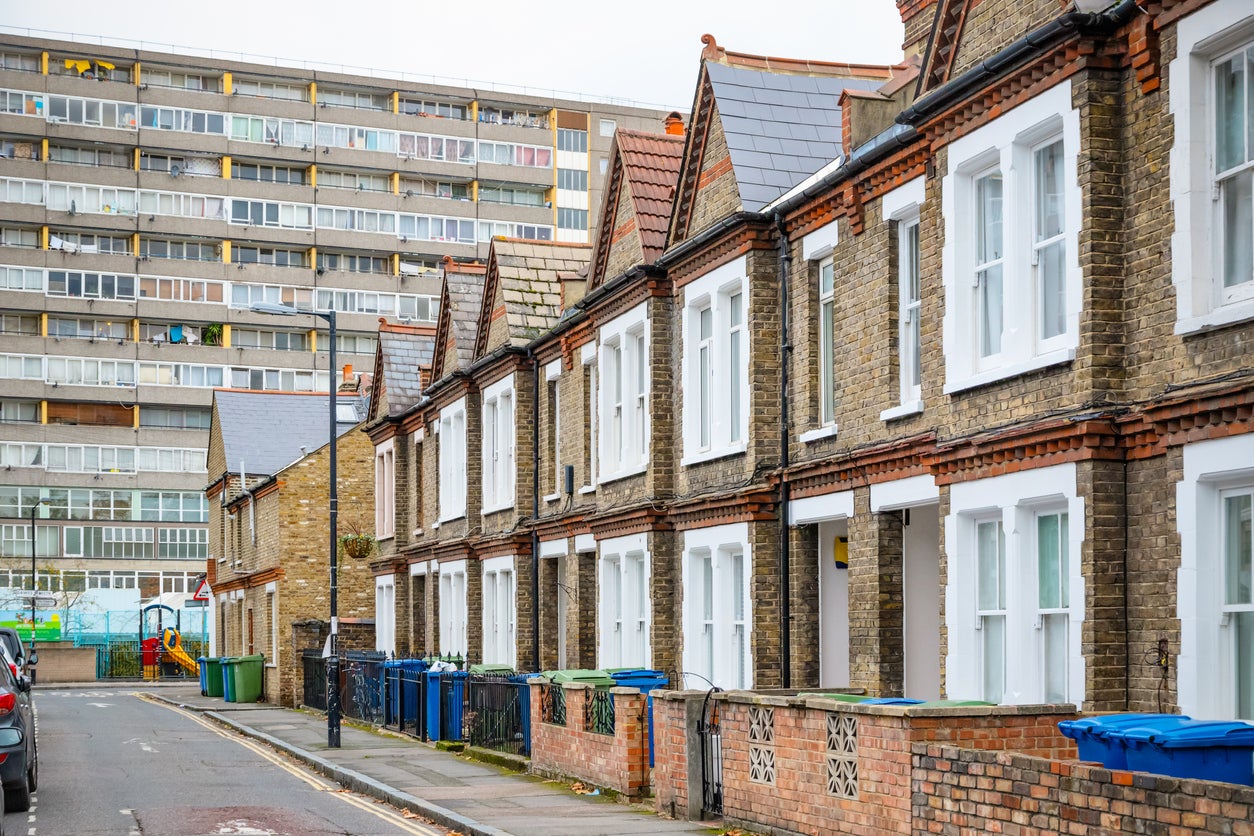Covid has shown us that our neighbourhood could be harming our health
The pandemic stranded us in our local areas and made us pay attention to what neighbourhood features make us feel well


There is an ongoing battle for every inch of ground in our cities. Developers want to monetise it. Cars are allowed to monopolise it. People who just want to walk, rest, play, exercise and socialise in it have historically held the weakest ammunition in this battle. But Covid-19 has changed the rules of engagement.
The pandemic has highlighted racial, economic and geographic inequalities in the effects of Covid-19. Just as the spatial characteristics of our communities have shaped people’s opportunities to catch or prevent the spread of the virus, these factors have also shaped people’s mental health and wellbeing.
People in affluent neighbourhoods have benefited from more spacious homes for home working and schooling, with private gardens for safe social mixing, nearby high-quality local parks for daily exercise, and easy access to healthy food options. Wealthier people tend to benefit from more walkable and connected neighbourhoods that facilitate social connections and expand their access to the rest of the city. Meanwhile, poorer communities are more likely to suffer from overcrowded housing, are less likely to have high-quality local amenities like parks, and often have fewer opportunities to access the full public life and opportunities of a city.
The pandemic has not changed these socio-spatial inequalities – but it has altered our awareness of their uneven effects on health. By stranding us in our own local areas, the pandemic has made us pay attention to what neighbourhood features make us feel well, and the need for fairer access.
These observations are backed by science. A growing base of research tells us how to design a restorative city that supports people’s mental health and wellbeing. This offers timely ammunition for a population that is realising this is exactly what they want and need.
Having just one hour per day to exercise locally during the height of the pandemic underlined the physical, mental and social health benefits of having access to parks. People without private gardens, local parks or allotments realised just how disadvantaged they were. The science reflects this hunch: having local access to well-maintained parks and other natural spaces, whether greenery or water-based, promotes better mental health and wellbeing.
Pavements and other public spaces have also caught our attention. In attempts to maintain social distancing, people have become more aware of the local availability of walking, bike and other active transport infrastructure to provide safe travel choices. Many neighbourhoods implemented “spaces for people” initiatives during the pandemic, including temporary street closures, cycle lanes and widened pavements for walking. This has led to permanent change in some cities, such as Paris, creating hundreds of new bike lanes, play streets, and limiting the number of cars in the city centre. Research shows that improving walkability and bikeability improves mental health along with physical health. So too does providing opportunities for play for all ages and abilities, and designing interesting streets and other public places that engage our curiosity and appeal to all of our senses.
Research published in the US’s Proceedings of the National Academy of Sciences journal tells us that a major way in which city living can benefit mental health is through social opportunities. The social fabric of a neighbourhood is intrinsically linked to our sense of wellbeing and belonging. Pandemic-enforced isolation came at the same time as our psychological and practical needs spiked. We got to know our neighbours better and discovered whether we could rely on them for support or not. Urban design can help facilitate these connections – for example, spatial features like shared gardens and pocket neighbourhood parks can increase the likelihood of social cohesion and a sense of belonging in a community. Science shows these spatial features also foster trust and empathy. Designing neighbourhoods in an inclusive way to create a sense of belonging for everyone is essential to improving social wellness for all.
The health impact of urban design disparities has become increasingly less acceptable to us as a society. People are realising the mental health benefits of living in a neighbourly and inclusive city where everyone has good access to greenery and water, physical activity and play, and interesting features like intriguing shopfronts and public art that stimulate the senses and evoke our fascination and wonder.
This is the essence of the “restorative city”, a concept to which urbanists have aspired to for years, but struggled to make a reality due to competing priorities – like more space for cars, or cramming as many residences as possible into tight spaces, or zoning of separate residential and commercial districts. The concept fuses evidence and theory from urban science to offer a new framework to design our cities for greater social stimulation and connections, to reduce the incidence of mental health problems like stress, depression, and anxiety, and sustain overall wellbeing.
Mental health needs have been massively increased by the pandemic. Cities can no longer afford to ignore opportunities offered by urban design and planning to make a positive difference to people’s wellbeing, particularly when these changes have unprecedented public support and ever-clearer research backing.
The pandemic has changed the rules of engagement for cities, and city planners, designers and leaders must seize their new mandate and act now to create more restorative cities to benefit mental wellbeing for everyone who lives and works in them.
Layla McCay is director of the Centre for Urban Design and Mental Health, and director of policy at NHS Confederation
Jenny Roe is Mary Irene DeShong Professor of design and health and director of the Center for Design and Health in the School of Architecture, University of Virginia
Restorative Cities: Urban Design for Mental Health and Wellbeing by Jenny Roe and Layla McCay is published by Bloomsbury
Join our commenting forum
Join thought-provoking conversations, follow other Independent readers and see their replies
Comments
Bookmark popover
Removed from bookmarks